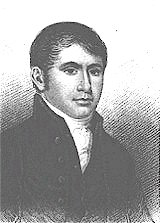Leiston Abbey
Bernard Barton
Beautiful fabric! even in decay
And desolation beauty still is thine:
As the rich sunset of an autumn day,
When gorgeous clouds in glorious hues combine
To render homage to its slow decline,
Is more majestic in its parting hour,
Even so thy mouldering, venerable shiine
Possesses now a more subduing power
Than in thine earlier sway with pomp and pride thy dower.
To voice of praise or prayer, or solemn sound
Of sacred music, once familiar here,
Thy walls are echoless; within their bound,
Once holy deemed, and to religion dear,
No sound salutes the most attentive ear
That tells thy former destiny; unless
It be when fitful breezes wandering near
Wake such faint sighs as feebly might express
Some unseen spirit's woe for thy lost loveliness.
Or when on stormy nights the winds are high,
And through thy roofless walls and arches sweep,
In tones more full of thrilling harmony
Than art could reach, while from the neighbouring deep
The roar of bursting billows seems to keep
Accordant measure with the tempest's chime;
O, then, at times have I, aroused from sleep,
Fancied that thou, even in thy proudest prime,
Couldst ne'er have given birth to music more sublime.
But to the eye revolving years still add
Fresh charms, which make thee lovelier to the view;
For Nature has luxuriantly clad
Thy ruins, as if wishing to renew
Their claim to homage from those hearts that woo
Her gentle influence: with indulgent hand
She has atoned for all that Time could do,
Though she might not his ravages withstand;
And now thou art her own: her skill thy beauties planned.
The mantling ivy's ever-verdant wreath
She gave thee as her livery to wear:
Thy wall-flowers, waving at the gentlest breath,
And scattering perfume on the summer air,
Wooing the bee to come and labour there;
The clinging moss, whose hue of sober gray
Makes beautiful what else were bleak and bare,—
These she has given thee as a fit array
For thy declining pomp and her delightful sway.
Leiston Abbey was founded in 1182. The Abbey was dissolved in 1536 and given to King Henry VIII's brother-in-law the Duke of Suffolk.
A farm and later a Georgian House grew up in the ruins.
